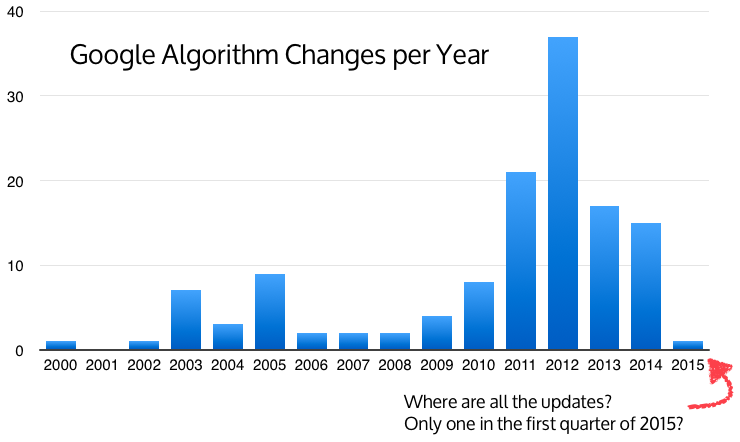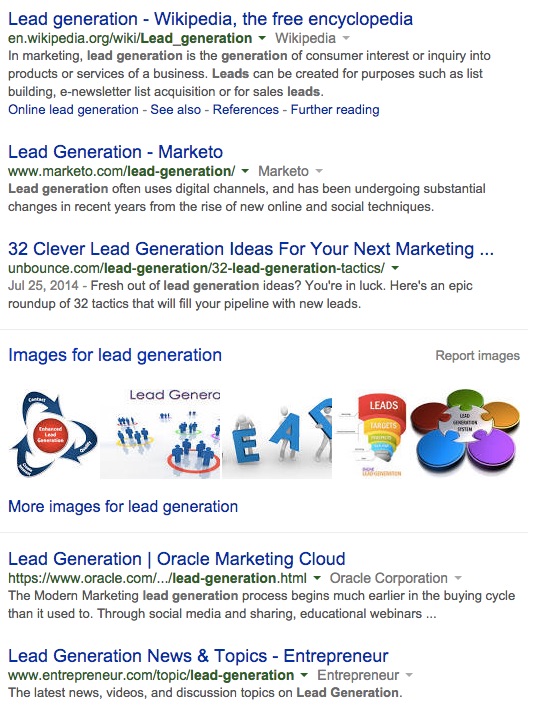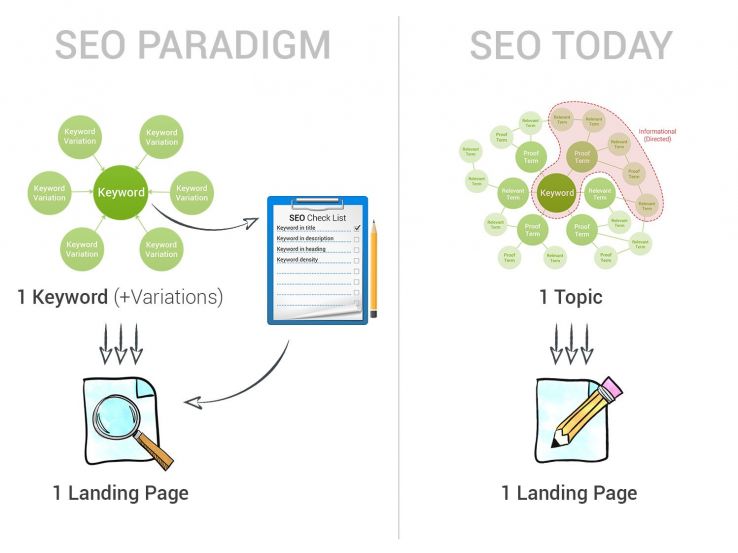How Every Blog Posts Can Earn SEO Traffic
It’s almost a universally accepted truth that most blog posts get a traffic spike the day or week they are published and promoted, and then fade into obscurity in the ever-increasing sea of online content. Even some SEO-savvy marketers are having an increasingly harder time creating content that stands out from the general banality of brand content. Seasoned SEO strategies have already become standard in content marketing. Everyone knows about descriptive alt text for images, positioning keywords in headers, internal links, etc. It’s not enough to cut through the noise anymore. Standing out from the content crowd means updating your SEO best-practices in light of Google’s latest updates, and changing user expectations. Our team is constantly analyzing and experimenting, and we’ve been seeing such great results that we wanted to share some of our best.
How to Earn High Rankings with Every Blog Post is a free PDF checklist designed to quickly and simply remind marketers and content creators about five modern, proven SEO strategies for blogs. What if each of your carefully crafted posts continued to earn traffic and high rankings indefinitely? It’s possible.
Google Updates: New Rules for Quality
At the end of 2014, Google announced that Penguin would start continuously updating. Aside from the mobilegeddon announcement and some rumors about fact-checking algorithms, Google has been uncharacteristically quiet through the first quarter of 2015.  Developments from Google’s artificial intelligence research teams may indicate why. The latest algorithm—DQN—is an, “artificial agent” that learns without user input. So far it has mastered almost 50 Atari games, but the implications for search are potentially huge. If Google algos can learn on their own, they can also make constant, imperceptibly small changes on the fly. That’s great for user experience, but could be endlessly frustrating for marketers trying to to manipulate SEO tricks to steal rankings. Without the algorithm “hints” that SEOs are used to getting from Google update announcements, the only solution for optimization is to pursue the end game: create outstanding content, and kill the marketing silos within your organization. That means your brand blog needs to publish nothing but the best, and your content team needs to work with PR, sales, development, etc. to make it happen.
Developments from Google’s artificial intelligence research teams may indicate why. The latest algorithm—DQN—is an, “artificial agent” that learns without user input. So far it has mastered almost 50 Atari games, but the implications for search are potentially huge. If Google algos can learn on their own, they can also make constant, imperceptibly small changes on the fly. That’s great for user experience, but could be endlessly frustrating for marketers trying to to manipulate SEO tricks to steal rankings. Without the algorithm “hints” that SEOs are used to getting from Google update announcements, the only solution for optimization is to pursue the end game: create outstanding content, and kill the marketing silos within your organization. That means your brand blog needs to publish nothing but the best, and your content team needs to work with PR, sales, development, etc. to make it happen.
Keywords Are Dead: Long Live User Intent
Old-fashioned, keyword-based SEO strategies strap heavy constraints on your content in the current market. They’re limiting at best, and even backwards in many circumstances. Search engines are constantly striving to dish up better results based on the question behind the query, which means SEO needs to align to the same focus. Most user intent shakes down into one of two categories: learn or purchase. If a buyer types, “lead generation” into a search box, for example, is he looking for information about generating leads or is he looking for software to purchase? Is he asking, “What is lead generation?” or, “Where can I buy lead generation software?” Google has more data and experience than any other engine or marketer, which makes their search results pages (SERPs) a goldmine of user intent information. Try it for yourself: run a depersonalized search for one of your target keywords and ask yourself what specific questions are being answered by the results. (There may be more than one, but note which—if any—stand out.)  The first five organic results for “lead generation,” all deliver information and strategies, because Google has determined that most users who conduct that query are looking for information rather than software to purchase. If your brand sells lead gen software, then, ranking for “lead generation” means creating high-quality content that answers the, “What is …?” and the, “How do I …?” Gone are the days (and good riddance) when SEO meant writing about a keyword. Now, more than ever, SEO-savvy content means writing to answer the question behind the keyword, and a brand blog is the perfect way to do that on a consistent basis.
The first five organic results for “lead generation,” all deliver information and strategies, because Google has determined that most users who conduct that query are looking for information rather than software to purchase. If your brand sells lead gen software, then, ranking for “lead generation” means creating high-quality content that answers the, “What is …?” and the, “How do I …?” Gone are the days (and good riddance) when SEO meant writing about a keyword. Now, more than ever, SEO-savvy content means writing to answer the question behind the keyword, and a brand blog is the perfect way to do that on a consistent basis.
Topical Authority: The New Standard
Content marketing has saturated the landscape and Google knows it. Their drive to dig out and deliver the best content for users has led to some intricate strategies for identifying content that demonstrates special authority on its topic.  Searchmetric’s 2014 Ranking Factors Study highlighted some key considerations that all seem to indicate ways Google is searching for topically authoritative content:
Searchmetric’s 2014 Ranking Factors Study highlighted some key considerations that all seem to indicate ways Google is searching for topically authoritative content:
- Proof and relevant keywords—Proof terms are closely related and likely to appear close to the main keyword itself, while relevant keywords as not as closely related but still likely to show up in the text. Content that includes proof and relevant keywords necessarily discusses the topic at some length, and ranks much better in results.
- Long content—Longer content, often enriched by media and written in more user-friendly language, consistently ranks well through the first three pages of search results.
- One page, multiple keywords—Post-hummingbird, SERP diversity is on the decline. One good page can now easily rank for multiple, closely-related keywords, because Google understands how those keywords are related and will deliver the best result regardless of which specific term is typed into a search box.
Rumors about Google’s fact-checking algorithm are substantiated by the general move toward holistic, authoritative content, and the trend in general should inspire a fresh look at every brand’s content calendar. Rather than striving to publish “good enough” blog posts on a quick schedule, plan to devote the same time—in research, writing, design, etc.—to creating one killer piece as often as you reasonably can. (It will be every week for some organizations, and every month for others.)
New SEO for Better Blog Rankings
It is possible to create blog posts that rank well and continue to drive traffic for months and even years, but last year’s SEO won’t get you there. If you’re ready to get ahead of the curve and turn your blog into a resource for both your audience and your brand, don’t forget to download our free, five-step checklist, How to Earn High Rankings With Every Blog Post. It’s not a tome of every stale SEO strategy available online; it’s five concise reminders that will push every piece of blog content to the next level.
With checklist in hand, start rethinking your top 10 target keywords with some user intent research, and then invest in creating 10 (or more—if you find more than one dominant user intent for a keyword) well-rounded, authoritative blog posts to answer the questions you uncover. Your posts will rise through the ranks, and you blog will quickly become one of the best lead-nurturing tools your brand can boast of.
What's Next?
Profound Strategy is on a mission to help growth-minded marketers turn SEO back into a source of predictable, reliable, scalable business results.
Start winning in organic search and turn SEO into your most efficient marketing channel. Subscribe to updates and join the 6,000+ marketing executives and founders that are changing the way they do SEO:
And dig deeper with some of our best content, such as The CMO’s Guide to Modern SEO, Technical SEO: A Decision Maker’s Guide, and A Modern Framework for SEO Work that Matters.




